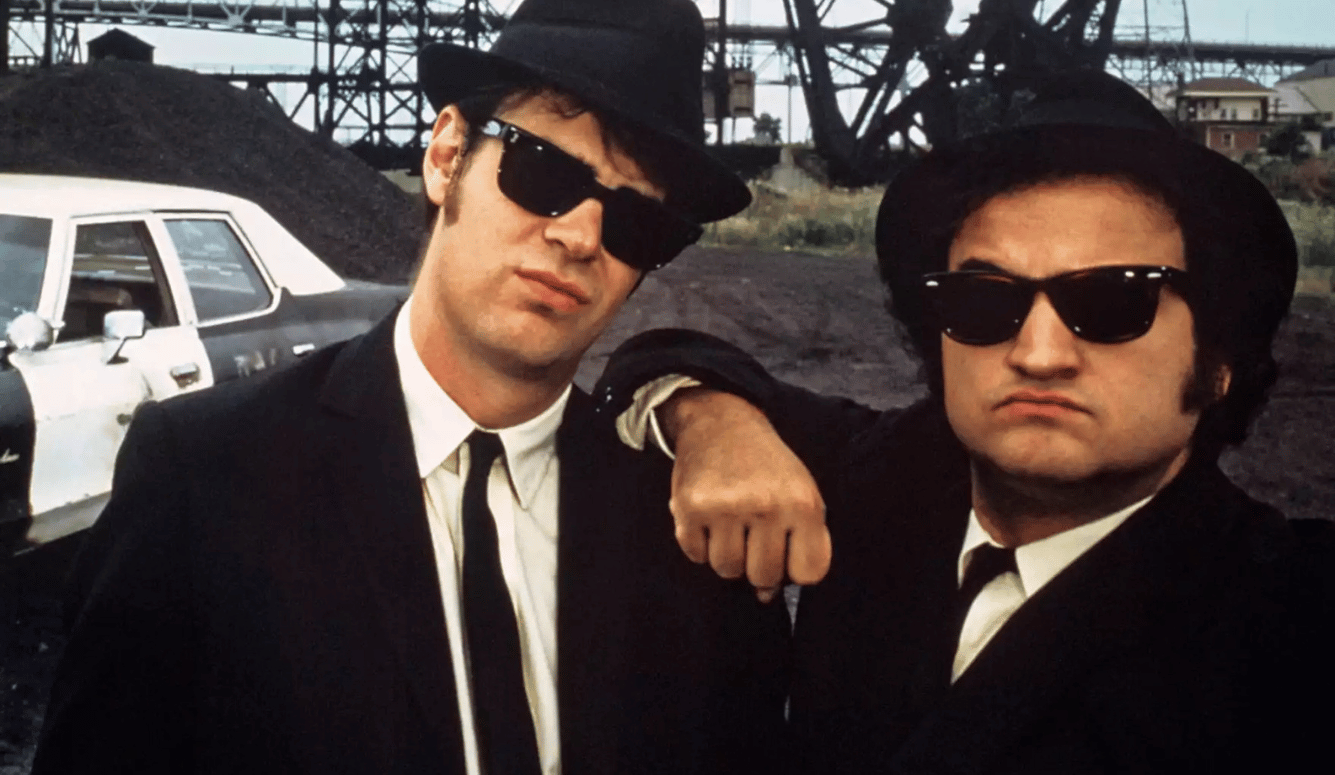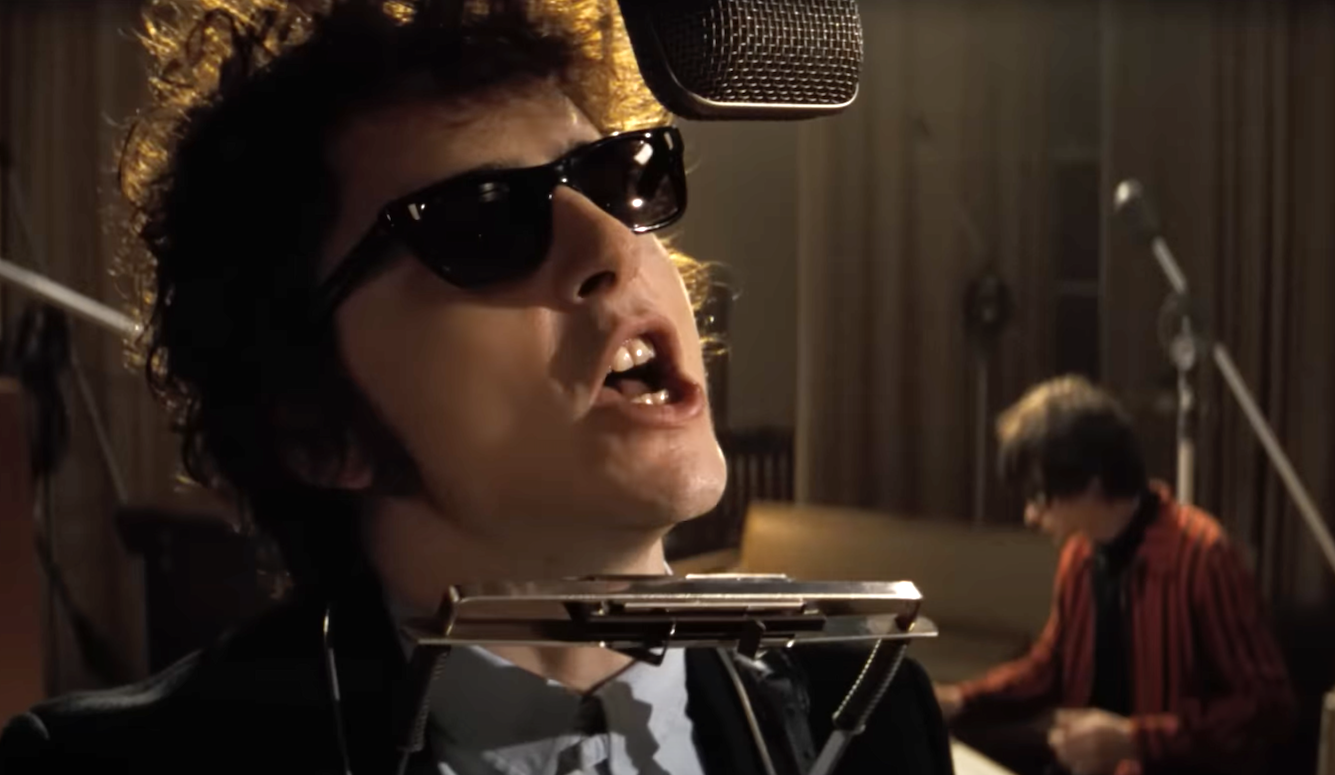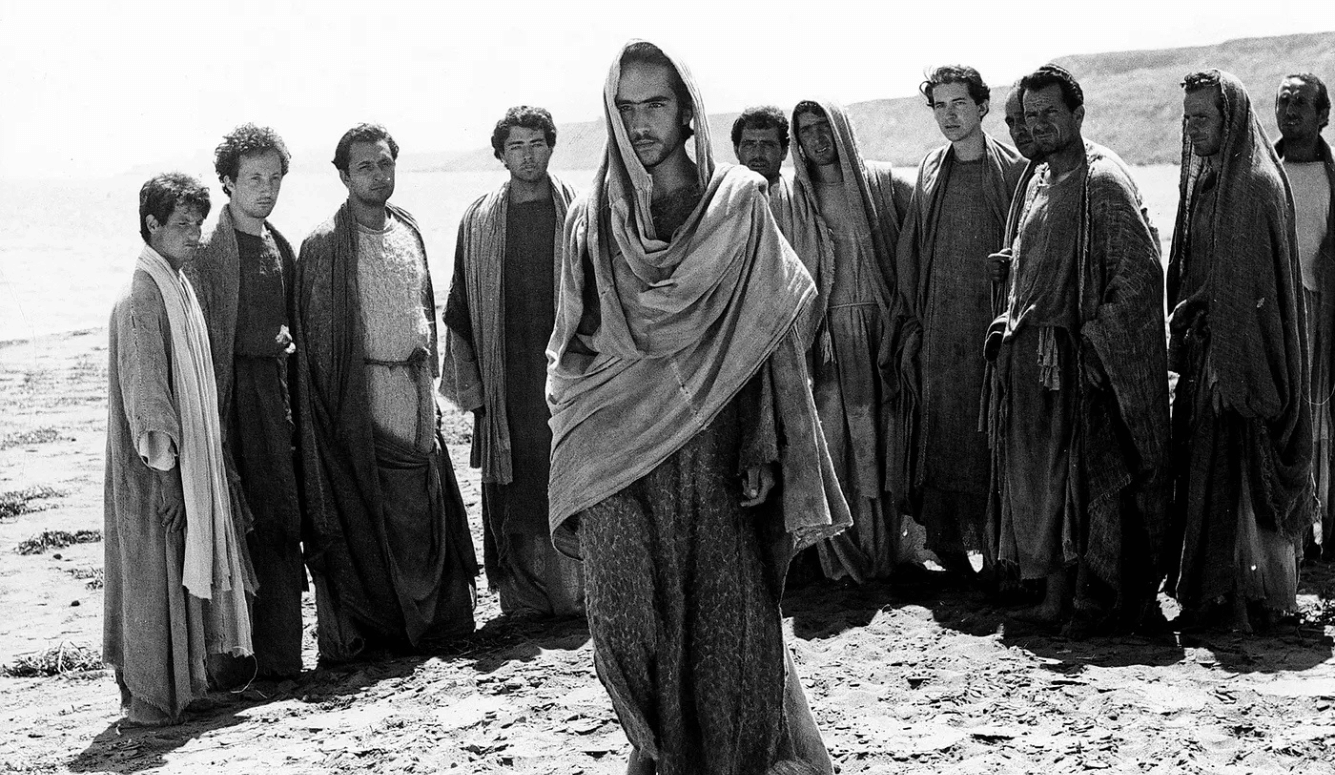Music
How The Blues Brothers Saved American Music
The Blues Brothers (1980) fostered a renewed appreciation of some of the best music America has ever produced.

By the 1980s, blues and soul music were effectively dead as mainstream cultural forces and the artists who had pioneered those genres were languishing in obscurity. However, this music from America’s past was crying out to be rediscovered and the unlikely agents of its revival were two white comedians: Dan Aykroyd and John Belushi.
The year 1980 marked a transition in popular music. Disco was on its way out. At the forefront of rock music, there were young bands like Van Halen and AC/DC, but rock had lost two of its most popular bands of the previous decade—Aerosmith and Led Zeppelin. Aerosmith collapsed under the weight of the band members’ heroin addictions and the band was to remain irrelevant until the musicians managed to revive their careers in the middle of the decade. Led Zeppelin’s drummer John Bonham died after a night of heavy drinking and—perhaps realising that his booming presence was irreplaceable—the surviving members elected to break up. The Rolling Stones were still going strong but were no longer the anti-establishment force they had been. The punk furore had quickly died down after the initial boom of the late 1970s and the genre went back underground. The Clash was the only punk band that mattered that was still part of the mainstream. New Wave—a more radio-friendly form of punk merged with synthesisers—had taken disco’s place in the dance clubs. Black music was in an especially tenuous position as disco effectively cannibalised black genres like soul, R&B, and funk. African-American artists would have to forge a new path and not make the mistake of becoming too reliant on any one subgenre. Meanwhile, a resurgence of the popular music of the past was poised to happen.
Dan Aykroyd and John Belushi first met in 1974. Aykroyd was a member of the Second City comedy troupe’s Toronto theatre and at night he ran Club 505, where he played his favourite soul and blues records. Belushi was in town scouting for talent for The National Lampoon Radio Hour of which he was a cast member. Despite being polar opposites in many ways—Aykroyd was reserved, while Belushi was the life of the party—the two quickly became fast friends. After performing their set at Second City, Aykroyd and Belushi went to Club 505, where the Toronto-based Downchild Blues Band’s record Straight Up was playing over the sound system. Aykroyd noticed Belushi getting into the music and assumed that the Chicago native must have some knowledge of the blues. To his surprise, Belushi said that he was a fan of hard rock bands like Deep Purple, Bad Company, Grand Funk Railroad, and Led Zeppelin and had never listened to much blues. Aykroyd informed Belushi that the bands he loved were merely playing a faster version of the blues. Howard Shore, who would later go on to become the musical director of Saturday Night Live for its first five seasons, overheard the two men’s conversation and jokingly nicknamed Aykroyd and Belushi “The Blues Brothers.”
The two men’s performances with Second City and Belushi’s performances with The National Lampoon Radio Hour drew the attention of Toronto native Lorne Michaels. Michaels had moved to New York to develop a late-night TV show for NBC. Saturday Night—renamed Saturday Night Live in 1977—was an immediate hit from the airing of its very first episode on 11 October 1975. It was the first TV show to be made by the first generation to grow up with television: these were people in their twenties and early thirties making a program aimed at a younger audience. The fact that Saturday Night Live aired after the watershed, at 11:30 pm, meant that the writers and performers could get away with edgier humour and make overt references to drug use, such as in the skit in which John Belushi as Beethoven plays and sings the Ray Charles song “What I’d Say” after snorting cocaine.
After finishing an episode of Saturday Night Live, the cast and crew would meet up at a bar Dan Aykroyd rented called the Holland Tunnel Blues Bar which had instruments waiting onstage for patrons to jam with if they chose. It was here—as well as at gigs at which they performed with local blues bands—that Aykroyd and Belushi began to perfect their Blues Brothers’ personae. Aykroyd’s alter ego was Elwood Blues and John Belushi’s was Jake Blues. They portrayed two blood brothers who were raised in a Chicago orphanage and were mentored in the blues by a janitor named Curtis. The duo donned black fedoras and sunglasses as a tribute to blues guitarist John Lee Hooker and wore black suits and ties in homage to comedian Lenny Bruce. Aykroyd also began writing a screenplay explaining the characters’ backstory. Lorne Michaels allowed the duo to play with the Saturday Night Live band as a warm-up act before their shows, but he did not think the act would ever translate into an actual skit. Instead, he had Aykroyd and Belushi perform a blues number while dressed as bees—a recurring theme on Saturday Night Live that Lorne Michaels perversely enjoyed including in as many episodes as possible because the NBC executives hated it.
The Blues Brothers concept wouldn’t die though. When Animal House was released in 1978, John Belushi was established as a comedy superstar. Comedian Steve Martin had become a Blues Brothers fan during his stints as a guest host on Saturday Night Live and he invited Aykroyd and Belushi to open for him during his residency at the Universal Amphitheater in Los Angeles. They eagerly accepted. There was only one problem. They didn’t have a proper band and they had only two weeks to put one together. The pair recruited Paul Schaffer, Saturday Night Live’s band leader, to help them assemble a band on the fly. Within only a few days, they had recruited some of the best session musicians in the industry. Paul Schaffer himself played the keyboards. Blue Lou Marini, Alan “Mr Fabulous” Rubin, Tom “Triple Scale” Scott, Tom “Bones” Malone, and Birch “Crimson Slide” Johnson made up the horn section. Matt “Guitar” Murphy, who played with the Howlin’ Wolf, and drummer Steve “Getdwa” Jordan also joined them.
Two of the band members were soul music royalty. Aykroyd and Belushi pulled off quite a coup by recruiting guitarist Steve “The Colonel” Cropper and bassist Donald “Duck” Dunn, two of the four members of Booker T. and the M.G.’s, the house band for Stax Records. (Band leader Booker T. Jones could not join due to other commitments and drummer Al Jackson had died several years earlier.) Booker T. and the M.G.’s had backed the likes of Wilson Pickett, Sam and Dave, and Otis Redding on their biggest hits and were later to have a hit of their own with “Green Onions.” Cropper and Dunn would be the key to reviving both Stax Records and southern soul music.
Assembling the best musicians known to man certainly paid off. After the Blues Brothers earned rave reviews opening for Steve Martin, Lorne Michaels finally allowed them to open a Season 4 episode of Saturday Night Live. After being introduced by cast member Garrett Morris, Aykroyd and Belushi entered the stage to the accompaniment of an instrumental version of Otis Redding’s “Can’t Turn You Loose.” Aykroyd carried a briefcase handcuffed to his wrist and after Belushi unlocked it he pulled out his trusty harmonica. Then they broke into their cover version of “Soul Man” by Sam and Dave. The performance was somewhat comedic because of Aykroyd’s and Belushi’s strange but surprisingly athletic dance moves. Belushi may not have been a polished singer, but he more than made up for it in swagger and charisma. However, the music itself was sharp and professional, and the duo received a rousing ovation. The Blues Brothers signed a contract with Atlantic Records and their live album Briefcase Full of Blues was released at the end of the year. The album’s lead single, “Soul Man,” peaked at number fourteen on the Billboard Hot 100, while Briefcase Full of Blues topped the Billboard album charts, making John Belushi the only person to have a number one album while also starring in both the number one movie and number one TV show in America.
A movie was the natural next step. The success of Animal House gave John Belushi the power to choose whatever film project he wanted and he decided to bring the Blues Brothers to the big screen. Animal House director John Landis was hired to helm the project. Universal Pictures, whose executives were desperate to have John Belushi on their roster, eagerly greenlit the project. But the production ran into problems almost immediately. Universal had allocated a USD$12 million budget and wanted filming to be completed within six months. Aykroyd, Belushi, and Landis wanted twenty million and a longer shooting schedule because they wanted the movie to have grand set pieces, which would require a large cast and crew. To make matters worse, the film didn’t have a script. What Dan Aykroyd had written wasn’t so much a script as a novel. It was over three hundred pages long and was not formatted like a proper screenplay because Aykroyd had never written—nor even read—a screenplay before. John Landis spent weeks cutting down Aykroyd’s story and structuring it into a filmable script, but he wasn’t able to finish in time and the movie had to start filming without a finished script and with a completely inadequate budget. Costs rapidly spiralled out of control as the car-chase scenes and musical numbers proved to be much more expensive than anyone had anticipated.
John Belushi’s escalating cocaine addiction—together with his use of quaaludes, mescaline, LSD, and amphetamines—certainly did not help matters. Belushi was under constant pressure to be the life of the party wherever he went, and cocaine ensured the party never ended. Filming was frequently held up because Belushi would show up to the set late or not at all. Dan Aykroyd dubbed Belushi “America’s guest” because he would invite himself over to total strangers’ houses, help himself to whatever was in their fridges, and pass out on their couches. To stop Belushi from leaving the set and to keep the rest of the cast and crew motivated during night-time shoots, a budget for on-set cocaine was allocated—according to Dan Aykroyd, this was not an uncommon practice in Hollywood during this period. Aykroyd has also said that everyone involved with the production used cocaine while filming.
By the time the production had been completed, the budget had ballooned to $27,000,000 ($104.5 million when adjusted for inflation), but the result was one of the most unique and beloved films of all time.
The plot is simple. The Blues Brothers need to raise $5,000 to save the orphanage they were raised in, so they get their old band back together for a charity concert. Along the way, they attract the ire of the Chicago police, the Illinois state police, a country music band, the Illinois Nazi Party, and Jake’s ex-fiancée. The Blues Brothers is both a car-chase action movie and a musical that celebrates African-American music and the city of Chicago. While the film doesn’t shy away from showing urban decay, it also depicts the city’s vibrant and tight-knit African-American community coming together in local diners and churches. Unlike many older comedies, its jokes still land forty-five years later and don’t come off as tacky or dated.

Most importantly of all, though, The Blues Brothers revived the careers of artists who had been unjustly forgotten. James Brown had ruled the R&B and soul music scenes with songs like “Papa’s Got a Brand New Bag” and “I Got You (I Feel Good)” crossing over into the mainstream charts. In the late 60s and early 70s, Brown pioneered funk music, which gave his sound a fresh appeal to old and new audiences alike. However, Brown found it difficult to adapt to the disco era. His raw, aggressive sound was at odds with the polished production values of disco. Brown’s concerts provided some of the greatest live music spectacles of all time, but attendance began to dwindle when he fell off the charts. His nearly twenty-year reign at the forefront of black music was over and his addiction to PCP hampered any comeback attempts. By 1980, Soul Brother Number One had hit bottom.
Much like James Brown, Ray Charles had been a pioneer of R&B and soul music in the 1950s and 60s. The opening keyboard riff from “What I’d Say” laid the groundwork for every rock and roll guitar riff that followed. However, by the early 1970s, rock music and funk had displaced Charles’s music and it was no longer part of the zeitgeist. Charles was still a popular touring act and received occasional mainstream attention, such as when he hosted an episode of Saturday Night Live in 1977. Yet on the whole, Ray Charles was a figure from the past playing music that was far removed from the mainstream.
As for Cab Calloway, most of the people who saw The Blues Brothers in cinemas probably had only a vague idea of who he was, if they knew anything about him at all. Calloway began his jazz career in the 1920s and his mastery of scat singing made him one of the first famous African-American entertainers. He was the first African-American to have his own syndicated radio show and his signature song “Minnie the Moocher” was the first single by a black American artist to sell a million copies. However, changes in popular music left Calloway in a similar position to Brown and Charles. He was still popular with the generation that grew up with his music, but to newer audiences, his style of jazz seemed antiquated.
In The Blues Brothers, Cab Calloway plays Curtis, the janitor at the orphanage who fosters Jake and Elwood’s love of African-American music. When The Blues Brothers are running late for their first big concert, Curtis rallies the backing band and they magically transform into a 1920s jazz band and play a rendition of “Minnie the Moocher” to stall the restless crowd. Calloway lobbied director John Landis to perform a disco version of the song that he had recorded in 1978. However, Landis explained to Calloway that The Blues Brothers was about celebrating music’s past and insisted that he perform the original version of the song. This was an excellent decision by Landis as the disco rendition of “Minnie the Moocher” would not only have been out of place but would have felt dated almost as soon as the movie was released. Introducing the original version to a new generation was a masterstroke. “Minnie the Moocher” was timeless when Cab Calloway first performed it in 1931, it was timeless in 1980, and it’s still timeless nearly one hundred years later.
It’s hard to believe that Aretha Franklin was considered a has-been at one point, but that’s exactly how the Queen of Soul, the greatest female pop singer of all time, was viewed in the 1970s. Franklin brought the influence of the black church to popular music in a way no one else has. “Respect” and “Think” were the soundtracks of the Civil Rights and feminist movements. Her voice dominated the airwaves in the late 1960s, which made her fall from popularity in the following decade all the more shocking. Franklin’s traditional soul sound was out of step with funk and disco and her attempt to revitalise her career by pivoting towards the latter in 1979 backfired, as disco had already burnt itself out by then. In 1980, realising that she needed a change of scenery, Franklin left Atlantic Records, the label that had made her a star, and signed with Arista Records, which was owned by Clive Davis, who took a special interest in reviving her career.
The Blues Brothers was pivotal to Aretha Franklin’s comeback. By casting her in the role of the aggrieved wife of Matt “Guitar” Murphy, the film stripped away the glam and glimmer from her image and presented her as who she was at her core—a tough woman who didn’t suffer foolishness from anyone, especially men.
James Brown, Ray Charles, Cab Calloway, and Aretha Franklin were all springboarded back into the mainstream by The Blues Brothers’ success. Cab Calloway went back on tour to perform for a new generation of fans. Ray Charles scored a series of hits on the country charts throughout the 1980s, continued to tour, and was embraced as an elder statesman of popular music. James Brown became an in-demand touring act again and scored a Top 5 hit on the Billboard charts with “Living in America.” Aretha Franklin had a string of hits throughout the 1980s and was the showstopper at every event she sang at until her death. The Blues Brothers reintroduced these artists to a new generation of fans, leading those fans to discover other great soul and blues artists, including Sam and Dave, Otis Redding, Eddie Floyd, Solomon Burke, and Taj Mahal.
Finally, John Lee Hooker’s inclusion in The Blues Brothers speaks volumes about what Dan Aykroyd and John Belushi were trying to accomplish. Hooker was a blues singer and guitarist who had never reached the heights of fame. Only two of his songs charted on the Billboard Hot 100. Hooker was a cult hero among blues aficionados, but up until 1980 it looked as if that was all he would ever be. A full three minutes of The Blues Brothers’ runtime is dedicated to John Lee Hooker performing his signature song “Boom Boom” with Big Walter Horton on the harmonica, drummer Willie “Big Eyes” Smith, and pianist Pinetop Perkins.
Their performance at the Maxwell Street flea market has no bearing on the film’s plot. It is a showcase for the Chicago blues in all its glory. This is what The Blues Brothers is at its core: a love letter to the great music of America’s past and to the culture of a great American city.






